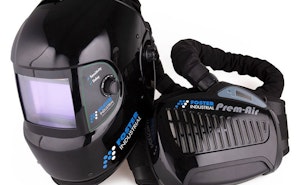Get in touch
MIG Welding vs TIG Welding
How does each process work?
MIG WELDING
This form of welding uses a continuously feeding wire, and uses the filter wire itself to produce arc and melts to add to the weld pool
Emits the need for additional filter wire and can be put down quite easily and quickly. Welding current in this case is decided by wire speed and power supply
TIG Welding
Creates a weld pool by feeding in long welding rods, making it more controlled and keeping both hands of the operator busy.
Produces arc with a non-consumable tungsten electrode. Tungsten has the highest melting point of any metal, used to transfer a welding current to an arc without degrading
What are the two processes good for?
MIG Welding
The speed and ease makes it perfect for putting down large amounts of welds. High is 50% quicker used on a variety of metals
A range of material thickness can be welded, from thin gauged sheet metal right up to heavier structural plates
This style of welding is geared towards productivity and ease
TIG Welding
This type of welding is most often used on thinner gauge materials such as home appliances and furniture
The low power option means there is much more control when welding, whilst creating a fine and delicate finish
For heavier tasks such as pipe welding TIG welding requires a supportive power unit
What are the downsides of each process?
MIG WELDING
Although this style can quickly put down welds, the speed can compromise the preciseness of the weld
MIG welding creates 'spatter' which occurs when the wire electrode haven't fused with the weld puddle, it is important to control spatter.
TIG Welding
Despite the fact that this type of weld is more precise, it can also be somewhat slow and time consuming
The process can be awkward, as it requires two hands and a foot by holding the torch, feed the filler rod and run electricity with the foot pedal
Which is the best process?
This depends on the job at hand. For home based projects where the welder has little experience and needs a simple solution, MIG welding would be more suitable. For more precise jobs TIG welding allows the welder to use the same machine for a wider variety of metals and is slightly lower in maintenance due to the external electrode.
Here at Foster Industrial we use the highest quality products and a team of experts who will work with you to find the right products for you.
Get in touch today

Shop MIG Welding
SHOP RECOMMENDED MIG EQUIPMENT
Shop Tig Welding
Shop Recommended TIG equipment
Learn & Resources
Contact Us
Foster Industrial, Matrix House, Gelders Hall Road, Shepshed, Loughborough, LE12 9NH
Accepted Payments



Contact UsTerms & ConditionsPrivacy PolicyShipping & ReturnsCE marking - BS EN 1090CareersTrade Account
2025 - Foster & Company Weldtech Ltd







